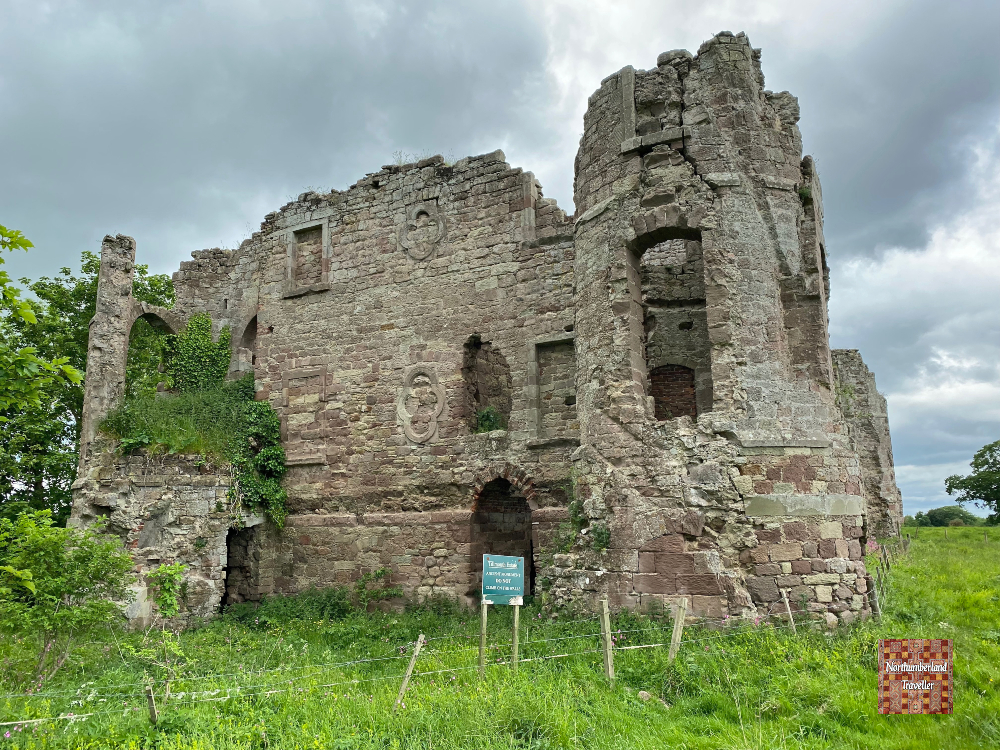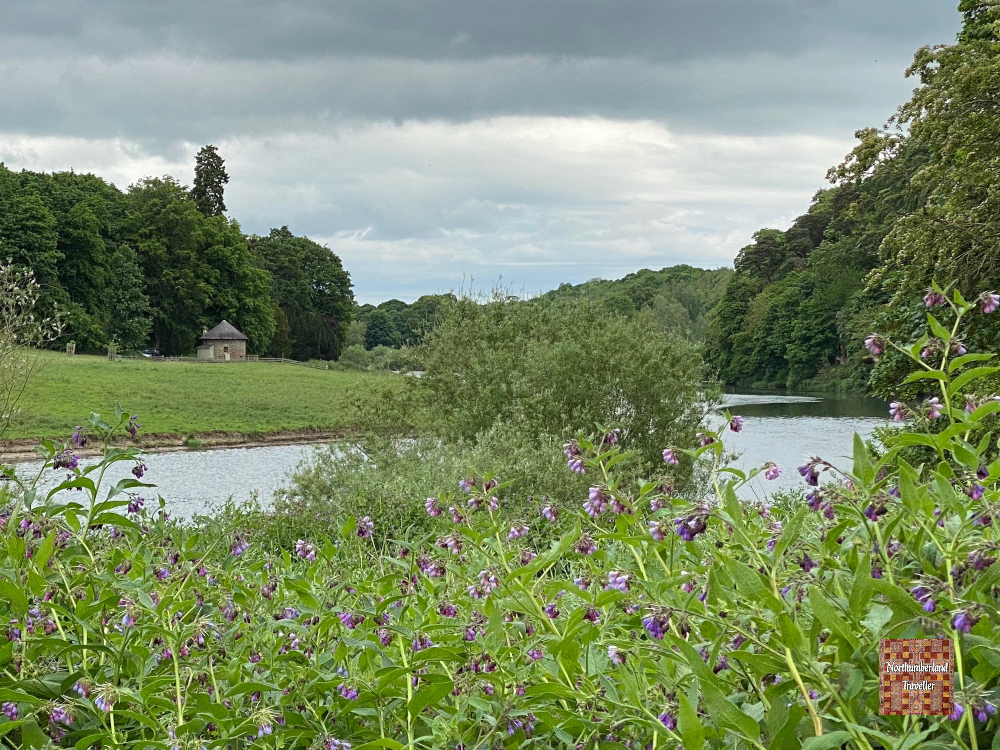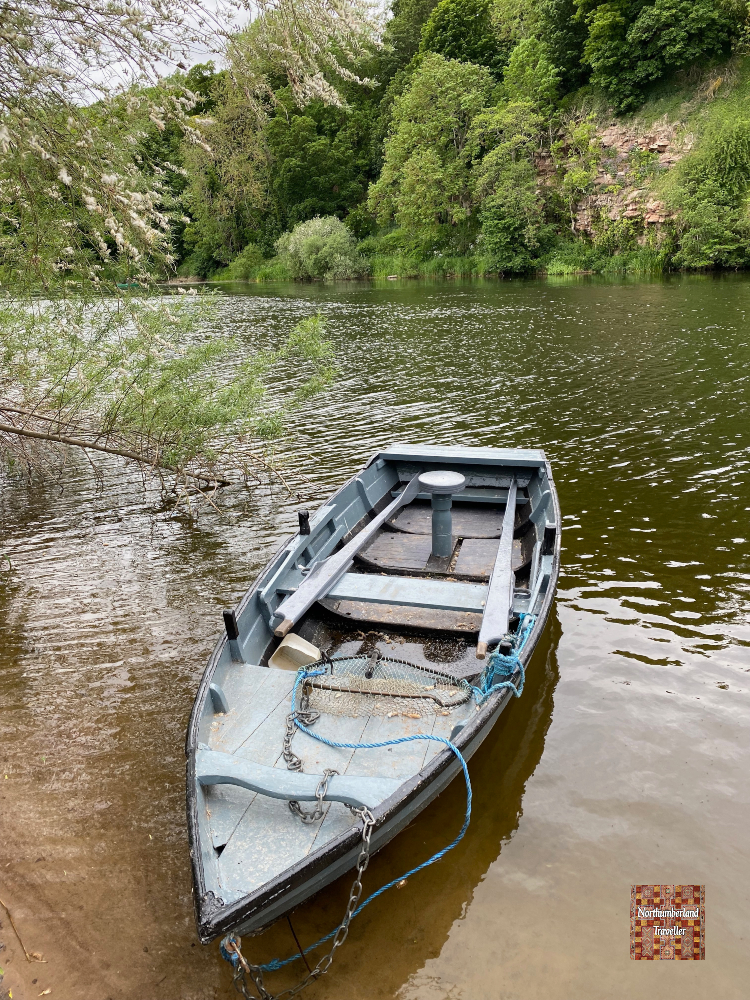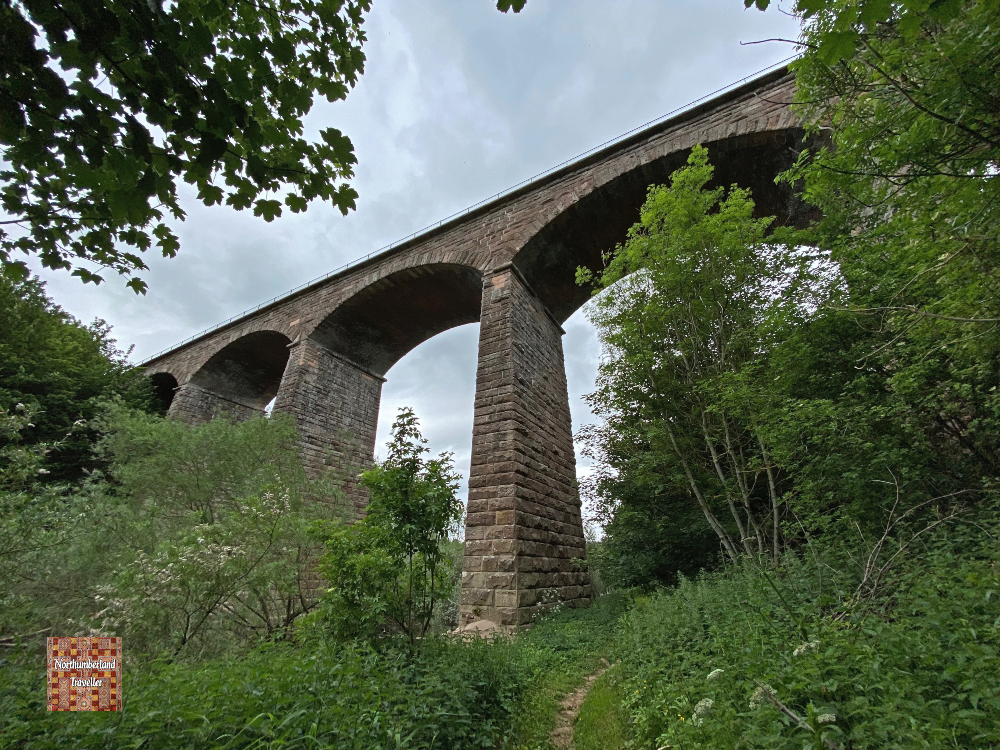Here is an enjoyable 2 1/2 mile walk in north Northumberland along the banks of the River Tweed and River Till and includes the ruins of Twizel Castle, one of the country’s finest mediaeval bridges and a disused railway viaduct.
You can find the exact route on the ViewRanger website.
The starting point is marked here:
The route starts and ends at a small lay-by on the A698 near Twizel Bridge. There is only parking for about 3 cars so it is probably better to avoid weekends and holidays if you want to find a parking space.
Twizel Bridge

When completed in 1511 this bridge was the largest single span arch in Britain (90 feet) and remained so until 1727. At the Battle of Flodden on 9 September 1513, the vanguard of the English army, about 10,000 men, crossed the River Till using this bridge to outflank the Scottish army on Flodden Hill. The bridge is no longer used for vehicle traffic.
Twizel Castle

The public footpath from the bridge passes though some woodland before arriving at the remains of Twizel Castle which is situated on private land. It was originally a 15th century stone tower. It was abandoned in 1496 and lay ruined until the late 18th century when Sir Francis Blake incorporated it into his design for a five story gothic revival mansion which was never finished. The house is now a two story folly.
The River Tweed
The route passes wheat fields before descending to the southern bank of the River Tweed.




Where the River Till flows into the Tweed the route follows a leafy path on the bank of the Till, doubling back towards the starting point.
Twizel Viaduct

Twizel Viaduct, also known as St Cuthbert’s Viaduct, was opened in 1849 to carry the Tweedmouth to Kelso railway branch line over the River Till. The bridge has six arches and measures 136 yards in length. The line was closed down in 1965 and the track removed. Since the populations of Tweedmouth and Kelso probably only totalled around 10,000 between them, one wonders how the railway owners thought they would ever generate enough profits to justify such a substantial and expensive engineering project.